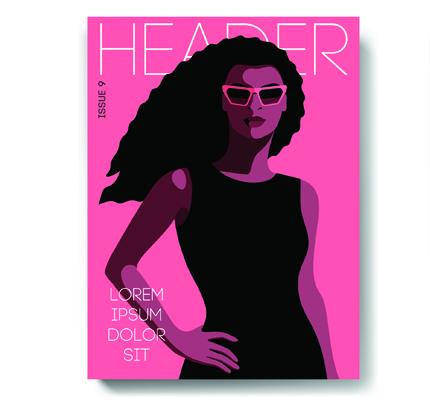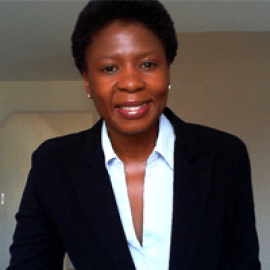
New Study Shows that African Magazines Emphasize Eurocentric Beauty Standards
In a new article published in NCA’s Journal of International and Intercultural Communication, Ngozi Akinro and Lindani Mbunyuza-Memani argue that globalization has led African magazines to emphasize Eurocentric beauty standards. Further, they argue that African magazines should aspire to show the “variations of African women, rather than a homogenized beauty standard based on a Eurocentric/western/white definition.”
Akinro and Mbunyuza-Memani first describe the concept of “whiteness,” which they use as an analytical framework. According to the authors and drawing from Dyer and other scholars, “whiteness surpasses just skin tone to include body shape, nose shape, eye shape, lips, and hair type.” These standards emphasize thinness, light skin tone, and long, straight hair, and are often present in “western” media representations of women. Since the 19th century, advertisements and other media have emphasized Eurocentric standards, which has led to a homogenization of beauty standards. This homogenization is part of the process of globalization wherein the global south is expected to assimilate to “western” standards and culture. The article highlighted a study of teenagers and women from non-“western” countries which found that many were unhappy with their bodies and did not consider themselves beautiful.
Based on whiteness and Eurocentric beauty standards, Akinro and Mbunyuza-Memani analyzed four African magazines: Drum, True Love, New African Woman, and Genevieve, which are primarily based in South Africa and Nigeria. They examined issues of the magazines published between 2010 and 2015 and focused on the magazines’ covers, which are meant to persuade buyers to purchase the issues. Akinro and Mbunyuza-Memani analyzed what hair types, skin tones, and body sizes were represented on the magazine covers where women were the main image. Their analysis included 376 magazine covers.
Examining hair types, the authors identified four possible hair types: straightened or store-bought hair (weave), natural African hair, African braids, and bald/skin/short. Akinro and Mbunyuza-Memani found that 72 percent of the women on the magazine covers had straightened or store-bought hair. In contrast, 10 percent had natural hair; 9 percent had braids, and another 9 percent were bald or had short hair. Although the percentages varied slightly for each magazine, more than half of the women featured on the covers of all magazines had straight or store-bought hair that is similar in appearance to white women’s hair.
Reviewing skin tone, about 60 percent of the women had medium skin tone; 30 percent had light skin tone, and 9 percent had dark skin tone. Akinro and Mbunyuza-Memani found that more women with light skin tones were featured on the 2015 magazine covers than had been featured on the earlier covers. In addition, some women’s skin tones changed over time. For example, Akinro and Mbunyuza-Memani reported that “Sindi Dlathu, a South African actress in the June 2012 [True Love] issue [was pictured] as a chocolate/medium tone, while Drum featured the same actress in the January 2013 issue as a light skinned model.” While some differences may have been due to setting or lighting, Akinro and Mbunyuza-Memani suggest that other differences may have been a result of editing pictures to make models’ skin appear lighter.
Looking at body size, the authors found that women were most likely to be thin (71 percent of covers); medium-size women were depicted 18 percent of the time, while plus-sized women were depicted only 11 percent of the time. The number of plus-sized women shown on the magazine covers varied; notably, New African Woman did not feature any plus-sized women during the period studied. Some of the plus-sized women were older celebrities and performers. Akinro and Mbunyuza-Memani note that the medium sized women were often dressed in ways that emphasized how small their waists were, to give them an “hourglass” figure.
Although African women vary in appearance, most of the women depicted conformed to Eurocentric standards of beauty through straight or store-bought hair, thinness, and light or medium skin tone. Akinro and Mbunyuza-Memani’s study found that these local magazines reinforced global, hegemonic perspectives by emphasizing a Eurocentric standard of beauty. Through these magazines, Akinro and Mbunyuza-Memani argue that “the identity of African women continues to be altered and to be constructed and represented through a white gaze or from a whiteness standpoint.”
These hegemonic standards may have negative ramifications for readers because “readers exposed to the magazines’ constructed beauty ideal are likely to believe that to be Black, with natural hair and plus sized is to be ugly or bad.” This repeated messaging could lead readers to negatively assess their own appearance. Akinro and Mbunyuza-Memani argue that the answer to this problem does not lie in one monolithic standard of beauty for Africa, but rather in a standard of beauty that recognizes the variations among African women, rather than one that conforms to Eurocentric standards.



